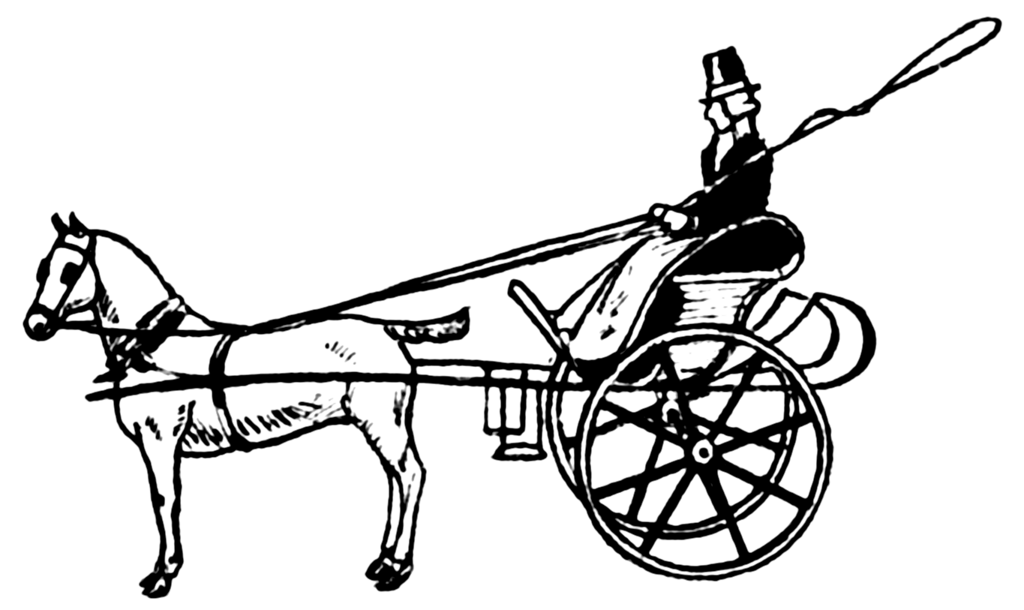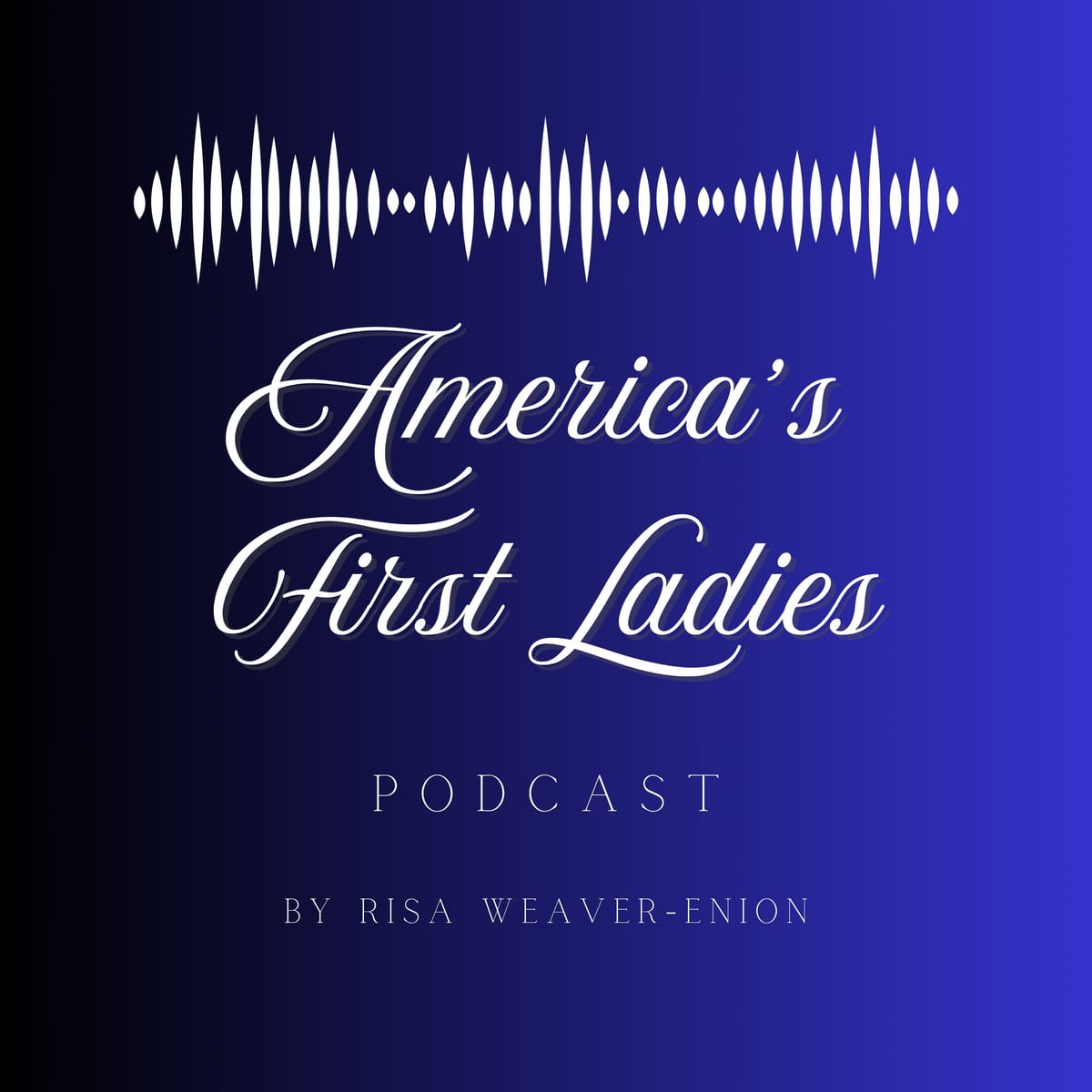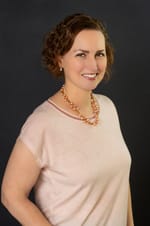Here's the drawing of a "gig" that I mentioned in the podcast. (Courtesy of Wikimedia and Pearson Scott Foresman.)

And if you're wondering what it means to "candle" an egg, it's the process of holding a bright light (almost certainly a flame in this case) up to an egg to assess the developmental progress, i.e., whether it's been properly fertilized and will develop into a chick. It's honestly a little insane that this was a job for children.
[Transcript of Episode 1.2]
Hello, and welcome to America’s First Ladies. I’m your host, Risa Weaver-Enion.
Episode 1.2, Little Patsy Dandridge.
Last week I shared some background information and context for evaluating Martha Washington’s life in the 18th century. But now let’s start at the beginning.
Sometime between noon and 1 pm on June 2, 1731, Frances Dandridge gave birth to her first child with her husband, John Dandridge. It was a baby girl, and they named her Martha. As I mentioned in the introduction, families tended to use the same names repeatedly. Martha’s grandmother and great-grandmother were both also named Martha. And she eventually had a daughter, granddaughter, and great-granddaughter named Martha in her honor.
Martha was nicknamed Patsy (which was sometimes spelled P-A-T-S-Y and sometimes spelled P-A-T-C-Y). It’s less important for a podcast though, amirite? I’m going to refer to her as Patsy over the next few episodes, because that’s what she went by at this stage of her life. Upon her marriage to George Washington, she started going by Martha, so when we get to that point, I will start referring to her as Martha.
Little Patsy Dandridge had brown hair, hazel eyes, and fair skin. She was always small—even in adulthood she only reached 5 feet tall. This would later prove somewhat comical when she married 6-foot-3 George Washington, but I’m getting ahead of myself.
Patsy was born in New Kent County, Virginia. New Kent County is in southern Virginia, roughly 25 or 30 miles north of Williamsburg, which was the capital of the colony of Virginia. Today we call it “colonial Williamsburg” but back then it was just regular Williamsburg. On her mother’s side, Patsy’s family in Virginia went back at least four generations.
Her family lived on a small plantation called Chestnut Grove. At that time, the word “plantation” was used to describe any agricultural property devoted to growing a single crop for export, regardless of how large the property was. All of New Kent County was rural agricultural property, and the crop of the day was tobacco.
Patsy’s family was well-off, but not wealthy. For context, Chestnut Grove was about 500 acres. The family of Patsy’s first husband owned about 17,000 acres and were considered very wealthy. Lord Fairfax, a prominent British landowner in Virginia owned 5 million acres.
The house at Chestnut Grove was a two-story frame house with three rooms on each floor. The rooms were paneled in planks of pine wood, and there were fireplaces at each end of the house to provide warmth. It was surrounded by chestnut trees and an orchard of fruit trees, and it was located on the bank of the Pamunkey River, which is a branch of the York River in Virginia.
Like most plantation properties, the house at Chestnut Grove was surrounded by a number of outbuildings. Kitchens were always separate buildings because of the risk of fire—no one wanted a kitchen fire to burn down the entire house. I want to quote here from Helen Bryan’s book Martha Washington: First Lady of Liberty because it’s a great list of the other buildings on a typical plantation property:
“A tobacco-drying house, a washhouse, a smokehouse, a still room for making beer and cordials, a springhouse, a poultry yard, a pigpen, a barn, a stable, slave quarters, a kitchen garden, an herb garden, a privy, an orchard, and sometimes a building used as a schoolhouse.”
You can imagine how much land all those buildings, gardens, and yards would take up. Because of this, homes were spread out and neighbors were not close by.
The Virginia planters wanted to be like the British aristocracy, so their children were educated similarly. Proper manners and posture were very important. Girls learned to manage wide skirts and were always corseted when in public. Corsets were pieces of fabric that had firm support rods sewn into them. The supports were often made of whalebone and were sometimes called “stays.” The purpose of a corset was to force a lady to stand and sit up straight and cinch in the waist. They were mighty uncomfortable, but they were a standard part of a lady’s wardrobe.
Bruce Chadwick in The General and Mrs. Washington writes, “Martha appreciated luxurious dresses and bonnets at an early age and enjoyed the company of other girls who enjoyed being well-dressed.” Throughout her life, Patsy/Martha would be admired for her elegant, but not elaborate, style.
Ladies also learned how to decorate a home, dress stylishly, host guests, converse in mixed company, sing, dance, and do needlepoint and embroidery. Many of these skills would surprisingly come in handy during the Revolutionary War.
Here’s a quote from the book Martha Washington: An American Life by Patricia Brady:
“Besides the mundane tasks like sweeping and mopping, here are some of the things Patsy learned to do at her mother’s side: kill, pluck, and draw fowls, from the smallest hen to the largest turkey; track down setting hens, gather their eggs, and candle them; make dyes; spin, weave, and dye wool and linen; make clothes, sheets, towels, pillowcases, mattress covers, quilts, curtains, bed curtains, tablecloths, napkins, underwear, menstrual pads, diapers, and nightwear; stuff pillows and mattresses; beat dust from the rugs; turn mattresses and even out the feathers; gather useful herbs, plants, berries, and roots in the woods; concoct home remedies and beauty aids; salt and smoke hams, bacon, beef, and fish; make vinegar, sauces, syrups, and jellies; preserve fruit and vegetables; cook large meals over the fire in an open hearth; bake in a brick oven; make soap from lye and household grease; make furniture and silver polish and use them; wash clothes weekly in a huge boiling kettle without shrinking or discoloring them and spread them to dry; crimp ruffles and press clothes with heavy irons heated in the fireplace; darn, mend, and patch; and knit, knit, knit—woolen stockings wore out fast. The most common verb in this long list is ‘make,’ and that’s what colonial women did.”
My god, I’m exhausted just from reading that list. So the next time you feel like complaining about having to do laundry, just be glad that you don’t have to boil it in a large cauldron!
In addition to all this, Patsy was educated in reading, writing and arithmetic, probably by her mother, since the Dandridges weren’t wealthy enough to employ a private tutor. As the eldest child, Patsy also would have helped take care of the younger children. She was the eldest of 8—3 brothers and 4 sisters, Her mother also had a 9th child late in life after Patsy was already married. It’s no small feat that none of Patsy’s siblings died in infancy, nor did her mother die in childbirth as so many women did. But her brother John died at the age of 16, her sister Frances died at 13, and her sister Mary at age 7.
Patsy also possibly had an illegitimate half-sister who was raised at Chestnut Grove with the other children. Details on this half-sister are sketchy, because most families didn’t want to air their dirty laundry, so to speak. Her name was Ann, and she was quite a few years younger than Patsy. They shared a father, but Ann’s mother seems to have been a Native American woman.
The only biographer to mention Ann Dandridge was Helen Bryan in her book Martha Washington: First Lady of Liberty, published in 2001. The claim that Ann Dandridge was Martha Washington’s half-sister is supported by family lore but not by any documentary evidence. In her book Martha Washington: An American Life, published in 2005, Patricia Brady completely discounts the existence of Ann Dandridge by pointing out that Ann and her offspring never appeared on the 1786 or 1799 lists of Mount Vernon slaves, which were quite meticulously prepared.
However, if Ann Dandridge’s mother had been Native American, that doesn’t necessarily mean that Ann was a slave. Children born to slaves automatically became slaves too, so if Ann’s mother had been an African slave, then she would have automatically been a slave. But if Ann and her mother weren’t slaves, there would be no reason for Ann or her children to appear on the list of Mount Vernon slaves. We’ll almost certainly never know for sure.
Patsy and her siblings would have done a lot of the household work with their mother. Chestnut Grove is estimated to have had 15 to 20 slaves, but they would have been needed in the fields and rarely available to help with the housework.
Religion was a big part of Patsy’s life, and colonial life in general. Sunday church was an opportunity to see neighbors, socialize, conduct business, and get a break from housework. Sunday church is also where invitations were exchanged for dinners or dances at neighbors’ homes.
Because of the size of most plantations, neighbors were miles away from each other. There was little chance of just bumping into someone randomly, but visits were common, and Virginians were known for their hospitality. If someone stopped by, you would always ask them to stay for a meal, and sometimes even overnight. Visitors were never turned away.
Twice a year the planters and their families would travel to Williamsburg for the spring and fall session of the colonial legislature. These were known as court sessions or court days, because this was the time of year when all legal matters were handled at the courthouse.
The full-time population of Williamsburg was about 1000 people, but the population doubled during the bi-annual court days. There were also a number of balls, teas, and dinners during court sessions. These social occasions gave young people a chance to meet each other and find spouses.
In 1748, a man named Daniel Parke Custis started courting Patsy. He was a New Kent County neighbor who had crossed paths with Patsy many times throughout her life. He would have seen her grow up from a girl into a young woman.
Patsy was petite at barely five feet tall. She had dark brown hair, tiny hands and feet, and beautiful white teeth, which was very rare at that time. Throughout her life she was described as plump. Daniel was five foot six, dark-haired, and had large dark eyes. He was an active man, described as stout. Oh, and he was also supposedly the third-richest man in Virginia.
Daniel was 37 at the time, and Martha was 17. There was nothing unusual about the age difference. Because of the high rate of death during childbirth, men often married multiple times during their lives and often married women much younger than themselves. What was unusual about Daniel is that he was still a bachelor at 37. Most men had married at least once by that age.
But Daniel had an extremely difficult father. The Custis family was very wealthy, and the very wealthy usually married the very wealthy. Brides generally came into a marriage with a dowry of money, slaves, and/or land. The wealthier the family, the larger the dowry.
The Dandridges had a large family but not a large fortune, so Patsy could not hope for a large dowry. Daniel Custis’s father, John Custis, was appalled at the idea of Daniel marrying Patsy Dandridge because her family was not near wealthy enough.
But he had also objected to Daniel’s previous choices for marriage, even though they had been on equal terms, monetarily speaking, with the Custises. The fact is that John Custis was just a jerk. He had been unhappily married, and he enjoyed lording his money over his two children. He had already disowned his daughter for marrying without his consent, and Daniel was worried he would do the same to him.
What’s mildly ironic about this is that a substantial portion of the Custis fortune was technically brought to the estate by John’s deceased wife, Frances Parke. He may have hated his wife, but he sure loved her money.
I might as well tell you a story that was mentioned in all the books I read. John Custis and his wife argued constantly, both in private and in public. During one heated argument taking place while they were out riding in their gig (which was kind of like a chariot, but with seats; it had two big wheels and then an open bench seat and was pulled by horses - I’ll put a photo on the website if you’re curious. Go to americasfirstladiespodcast.com/1.2 to find it). Anyway, John turned the horses so that they headed into the waters of the Chesapeake Bay. Frances asked where he was going, and he supposedly replied, “To hell, Madam.” To which she then supposedly replied, “Drive on, Sir.” Needless to say, they did not enjoy a happy marriage. She died when their two children were young, so Daniel never really knew his mother. John Custis never remarried, not wanting to make another marital mistake.
Anyway, back to Patsy—Daniel appealed to friends and business associates to advocate on his and Patsy’s behalf to his father, but nothing worked. It’s a bit of a mystery why John Custis eventually did consent to the marriage. Somehow, it appears that Patsy went to see John and made her case in person. There’s no record of what she said, or even when or where this meeting supposedly took place. But John Custis consented, and then did everyone involved a huge favor by dying. This was November 1749, so over a year since Daniel had first started courting Patsy. In order to observe a mourning period, they put off the wedding until May 1750.
On May 15, 1750, 19-year-old Patsy Dandridge married 39-year-old Daniel Custis in the parlor of Chestnut Grove, with friends and family in attendance. Virginia weddings did not take place in churches because the churches were too far out in the countryside, and there was no suitable place nearby for the wedding festivities—the dinner and dancing.
Brides wore their brightest, most colorful silk gowns, and all the guests wore colorful clothing as well, even the men. The Church of England required weddings to take place in the morning, but the Virginians held theirs in the afternoons because they had to allow time for all the guests to travel however many miles to get to the wedding.
There was no such thing as a honeymoon in colonial America. Hotels did not yet exist, and the places where travelers would typically stay during long travels were gross and dirty taverns. You often had to share a bed with a stranger, and also bedbugs and fleas. No thanks!
Wedding celebrations usually continued for several days, with all the guests staying at the home of the bride. Women slept four or five to a bed. Trundle beds and pallets were pulled out. And the men just slept wherever there was a spot—on a chair, on a rug, or even on a haystack in the barn.
The colonial Virginians liked to party, and they didn’t mind having to crowd into a house or a bed if that meant the party could keep going.
When the wedding festivities finally ended, Patsy and Daniel left Chestnut Grove and went to live at the Custis plantation house, which was named White House, of all things. Little Patsy Dandridge was now Mrs. Custis.
Next week, we’ll cover her happy marriage with Daniel, which (spoiler alert) was sadly cut short by his untimely death.
Thanks for listening to this episode. It was produced by me. The music is by Matthew Dull. If you enjoyed it, please recommend it to a friend!

